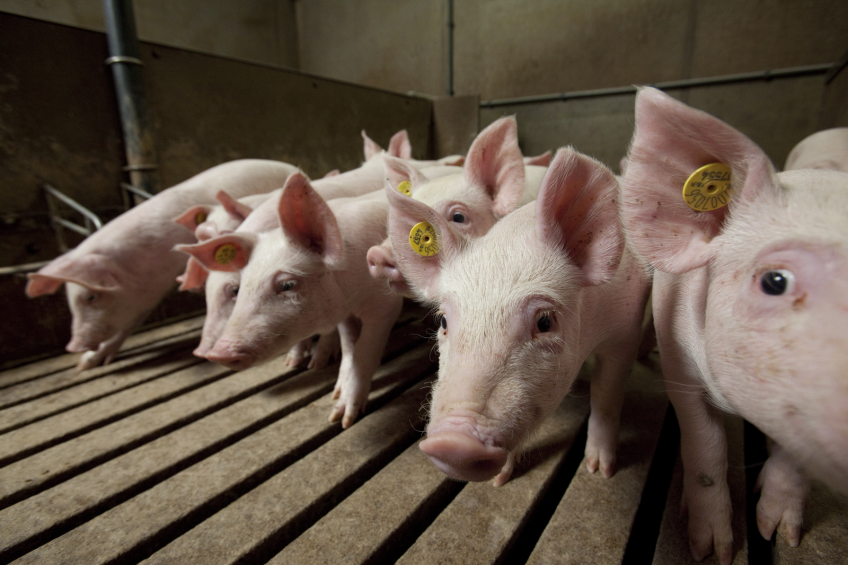Why methionine is valuable for youngest pigs

Getting the young pig off to the right start and keeping it healthy and growing is the key to a high-quality end product as it relates to harvest hogs or breeding animals. Certainly the diet plays a significant role in that effort.
By Dr Jeffery Escobar, Novus executive manager, Nutritional Physiology Research
Today’s faster growing, better performing, leaner pigs require more nutrient-dense rations, which sharpens the focus on key essential amino acids such as lysine and methionine. Finding advantages with supplements that work better and customising diets to the pig’s age and weight, genetics and production stage to maximise feed, facility and labour efficiencies are part of the daily equation.
Why methionine matters
Essential amino acids lay the groundwork to meeting the pig’s needs to deposit muscle. However, feedstuffs, alone, often fall short. Supplementing essential amino acids into swine diets is a proven cost-effective option.
Even with supplementation, it’s critical to ensure a balance. If one amino acid is lacking then the animal cannot synthesise additional protein. This leads to inefficient use of the feed’s nutrients, slower growth, reduced lean-muscle production and ultimately, economic loss. Lysine typically comes to mind as the first limiting amino acid in swine diets, but that is dependent on the age of pigs and type of diet. While lysine may be the first limiting amino acid for older pigs, methionine often moves into that spot for younger pigs depending on the ingredient composition of the diet. Numerous studies have shown this is particularly true in weaned-pig diets that contain high levels of spray-dried blood products or dried whey.
Figure 1 illustrates research by Stockland (1992) in a diet where methionine is not the first limiting amino acid. Supplementing HMTBa along with lysine has a synergistic effect on growth rate and feed efficiency. That’s because the ratio of sulfur-amino acids, methionine and cysteine, to lysine is important to maximising pig performance.
The entire GI tract
When it comes to supplementing methionine in swine diets, the two primary sources are HMTBa (2-hydroxy-4-methyl-thio-butanoic acid) and DLM (D and L methionine). While both are 100% absorbed by the pig, the absorption pathway and metabolic conversion differ significantly.
HMTBa is a naturally occurring precursor of methionine. From the chemical standpoint, HMTBa differs from DLM by having a hydroxyl group on the alpha carbon, rather than an amino group. As such, it is an organic acid, whereas DLM is not.
In terms of digestibility, HMTBa is absorbed primarily via passive diffusion, which means it passes directly into cell membranes all along the animal’s gastrointestinal (GI) tract, which does not spend energy in the process. DLM moves via active transport and carrier-mediated transport, which means other molecules and energy, are needed for it to cross the membrane and enter a cell. This requires the pig to produce and dissipate additional energy – a particular disadvantage when an animal faces periods of heat stress.
What’s more, DLM has a limited absorption route since the carriers are only found within the small intestine.
Novus International offers the HMTBa molecule in two physical forms – Alimet feed supplement, which is a liquid, and MHA feed supplement which is a dry formulation. The last supplement comes in granular form and contains 84% of HMTBa and 16% calcium – therefore it is both a methionine and calcium source, and offers additional benefits.
Supporting gut health
Adding organic acids to feed lowers the pH and leads to a reduction in microbial multiplication or growth. In the pig’s gut, organic acids lower the pH and inhibit numerous microbes, while allowing others to flourish due to reduced competition. As noted, this is the case with lactobacilli, a beneficial bacteria creating lactic acid in the gut. Organic acids also have a cumulative effect with lactic acid production – prompting increased digestive enzyme secretion in the gut as well as the pancreas. Consequently, this acid profile allows the pig to more thoroughly digest dietary proteins, fats and other nutrients.
In HMTBa, the organic acid response is similar to that of formic acid, an inexpensive and efficient feed acidifier. Research by Mercier and coworkers in 2013, found that 1 kg of HMTBa can replace 1.58 kg of formic acid. Consequently, it offers an ingredient cost savings opportunity, while protecting feed quality, maximising nutrient utilisation and enhancing animal health.
Diets with HMTBa are especially effective for newly weaned pigs because their immature gastrointestinal tracts do not produce enough acid for efficient protein digestion. The epithelial layer in the gut is not yet fully developed, which results in reduced nutrient absorption, gastric flow and enzymes secretion, and in turn lowers the pig’s feed intake and weight gain. Adding to that challenge, research by Heo and coworkers (2012) found that reduced gastric motility allows microbes like those responsible for post-weaning diarrhoea (e.g., hemolytic E. coli) to proliferate within the pig gut.
In sows, gestation and lactation place significant demands on energy levels for such things as foetal development, milk production and retaining body condition. Today’s larger, leaner, and highly productive sows require higher levels of energy and amino acids for maintenance and reproductive performance. If the diet falls short, the sow will draw from its own reserves and that can cause reproductive challenges, including delayed oestrus, poor conception, low embryo survival, declines in milk production, lower weight and reduced piglet survival rates. The first limiting amino acid will depend on the age of the sow, number of parities, diet, genetics and such. Adding methionine to sow diets can help even if it’s not the first limiting amino acid as it offers synergetic effects with lysine and threonine.
Phytase activity within the pig or sow also benefits from the organic acid component of HMTBa. Reducing the pH in the GI tract improves the efficiency of phytase activity and thus helps to break down the phytic acid, which allows the animal to efficiently utilise phosphorus, amino acids and trace minerals within the feed. Therefore, HMTBa may improve the efficiency of supplemental phytase and certain minerals, making diet formulations more cost effective. If the production region restricts soil phosphorus levels and related manure application, the positive effect of HMTBa on phytase activity is a bonus.
Economic returns
With today’s health challenges and growing economic pressures in swine production, small performance gains and small cost savings can add up to significant economic returns. Feed still makes up the majority of production costs, which means feed conversion improvements quickly improve financial gains.
In summary
Rising feed ingredient costs make it appealing to purchase lower quality feedstuffs, but the long-term price for that could be excessive. Supplementing methionine by using HMTBa offers a safety net for productivity and added cost savings.
The bulk of supplemental methionine’s benefits in swine are seen in the nursery and early growing period, as well as in sows. These are periods of significant dietary demands requiring high energy and feed intake, thorough nutrient digestion and absorption, and efficient feed conversion. The unique chemical structure of HMTBa allows it to function as more than just a methionine source. The organic acid benefits of improved gut health and nutrient digestibility means HMTBa methionine sources work better and produce more measurable results.
Source: Pig Progress magazine, Volume 30.7 (2014)











